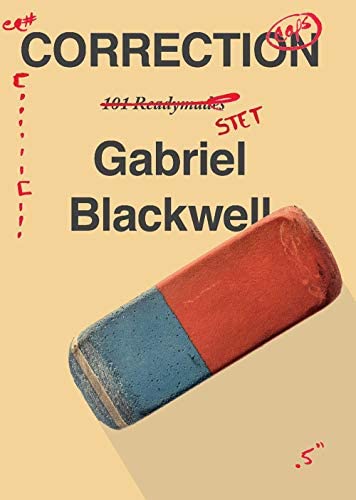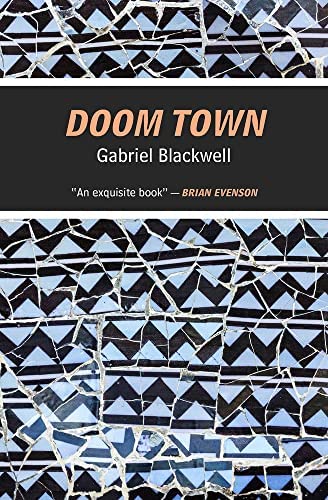This essay was first made available last month, exclusively for our Patreon supporters. If you want to support Full Stop’s original literary criticism, please consider becoming a Patreon supporter.

If we’re lucky, the first time we glimpse a bulletproof or so-called ballistic blanket, we see it not in-person but pictured in an online news article. At first nothing happens in the head. What we’re looking at exists well beyond the realm of reason and as such cannot be thought through. As with most features of the American nightmare, what we’re looking at can, however, be bought with American money: A quick Google search reveals that one may purchase a bulletproof blanket online, starting at $699. One presumes this is the budget version, seeing as most are significantly more expensive—$1200 dollars or more—which makes it perfectly clear why, despite the posturing of certain Fox News talking heads, Republican politicians have not made significant moves to implement these so-called blankets in American public schools. After all, in the event of an active shooter situation, each child would presumably need their own. Even at the starter price of $700 a piece, such an investment would likely balloon school budgets well past those of local police departments. As we all know, book-banning is a much cheaper means of child-protection.
We stare at the screen in silence. As we stare, the imagination, that tool of the mind so touted by elementary school teachers to their students, begins going about its awful work. The thing elementary school teachers don’t tell children about widening one’s imagination is that to do so is to increase one’s capacity for dread.
Even staring at the screen, we can hear them: the gunshots echoing down the hallway now. One see one’s kids, or the kids of friends and relatives. Someone bangs on the door of the classroom. The door bursts open. An older boy steps through it. An older boy who earlier that very same day could still perhaps have been described as a child. He holds an assault rifle.
My own boy is six, in first grade. Still sleeps with a stuffed rabbit. He likes to watch westerns with me and eat fried chicken. Every morning that I drop him off at school this image flashes before me, watching his small form as he runs for the door, one of the single-most nightmarish and monstrous truths of contemporary American life: Today might be that day. Every school day contains the possibility of that day.
While we may not possess in English a word for the precise category of object which the ballistic blanket represents—being neither life preserver nor burial cloth—we can at least locate the word weapon behind the word gun and the word assault rifle, before which, in America at least, every few months or so during the school year—often enough to use the word routinely—we find a group of dead and mutilated children.
*
Gabriel Blackwell’s Correction (2020) draws much of its energy from the same particularly American reality which has produced bulletproof blankets. Ostensibly a collection of fiction, the book’s cover terms the pieces ready-mades, implying that precious little fiction has been necessary. In a sense, these are found pieces, derived from the raw material of the too-fucked-up-not-to-be-true news cycle of Trumpian delusion, the kind of world ushered into existence by the likes of Alex Jones, Sean Hannity, QAnon, and of course, by Trump himself.

“The reasons the woman had threatened the parents of the murdered child were now, she admitted, more or less incomprehensible to her,” opens one story. “These were not her exact words. I don’t know what I was thinking, Your Honor.” Immediately, the narrative shifts from a direct account of the woman’s defense to a description of the trial as covered by the press, reporting that the media “chose to run a photo in which [the defendant] was sitting in a wheelchair (she was not wheelchair-bound), wearing a nurse’s scrubs (she was not a nurse), and in which, because of a poor coloring choice and the angle from which the photo had been taken, she looked bald.” A moment later, the woman confesses to the judge that she did, in fact, tell the father of the murdered boy, that she hoped he “would see his son real soon,” and that the shooting, in her opinion, was a “hoax perpetrated, so her posts implied, by CERTAIN ELEMENTS,” in order to “impinge on the GOD-GIVEN RIGHTS OF TRUE PATRIOTS.”
Repeatedly, while reading Correction, I had occasion to recall a certain white man I saw while covering the 2020 Trump rally in Tulsa—an event whose location and date had been deliberately chosen to coincide with both with Juneteenth and the ninety-ninth anniversary of the Tulsa Race Massacre. The man, who wore a Trump campaign T-shirt and, super-hero style, as a cape, a Trump flag, repeatedly hollered the phrase “ONE MORE MASSACRE” over the heads of Black Lives Matter protestors. Later that same afternoon I heard him say he wasn’t a racist.
Another story in Correction describes the former executive director of a state political party and general counsel who stabs a family dog twenty-three times with a santoku. His logic: “I’m Jesus. I’m about to get crucified in the media. The reason I killed the dog is simple. It’s in the state constitution: God is sovereign and he told me to do it.” The story’s conclusion: “Representatives of the state party called the incident regrettable, but have nothing further to say at this time.” Like most of the stories, the story of the politician’s canicide runs only two to three pages; and as nearly all of these brief episodes do, it encapsulates the insanity and despair that have become the calling card of our age. Though lacking a narrative through-line, the overall effect of these pieces when taken together feels novelistic: The stories themselves don’t feel so much like distinct entities as disparate areas of a darkly crowded canvas, à la Hieronymous Bosch. Most of the stories make use of a narrator who seems to exist on the omniscient plane, without any discernible characteristics. In others the author himself seems to serve, as when, very late in the collection, the entire text of one story runs thus: “I ought to have seen, long ago, that all along I’d been conspiring with outside forces to ruin any chances I’d had for happiness.”
*
My only real complaint about Gabriel Blackwell’s work is that it isn’t more widely known, and this leaves me few people with whom to discuss his work. Even in the online world of indie lit, he is perhaps better known as the editor of the online literary magazine called the Rupture (formerly the Collagist), which recently published its final issue. As of this writing, not a single review had yet to appear of his most recent novel, Doom Town (Zerogram Press), which was released in May 2022. Correction, which was released in 2020, garnered just two reviews. Not a single one of his books has ever been covered in a major outlet. Part of this obscurity may no doubt be attributed to the ever-increasing lack of outlets for serious criticism in this country, and the fact that Blackwell has published all of his books with indie presses ranging from smaller to small.

Part of it may also be attributed to uncategorizable nature of his books. Madeleine E, for instance, his doppelgänger-filled 2016 novel released by Outpost 19, serves equally as a book-length work of criticism about the 1958 Hitchcock film Vertigo. At the same time, it features a protagonist named Gabriel Blackwell, writing a book called Vertigo Vertigo Vertigo, who has also published all the same books as the actual writer Gabriel Blackwell, whom the protagonist worries is an interloper. The madness of Vertigo finds itself transmuted into the madness of the character Gabriel Blackwell writing a book called Vertigo Vertigo Vertigo, which is in turn written by the novelist known as Gabriel Blackwell. It’s as dynamic and interesting a work of creative film criticism as I’ve ever read, giving even Geoff Dyer’s Zona a run for its money.
*
Having published Correction in 2020, Babel, a collection of short stories, in 2021, and Doom Town, earlier this year, Blackwell seems only to be picking up steam as a writer. His work marks the journey from darkness into further darkness, his prose cascading from somber erudition to grimly explosive dread. His true subject, like the great horror writers of old, is madness, and his method of attack one of unremitting singleness of purpose. The individuals who populate his fictions occupy spaces whose light has failed and whose windowless walls creep ever closer and closer together: The pervading conditions are cramped, the prospect of escape, laughable—though there’s seldom anything at which to laugh. The walls in his world may lack windows but only rarely fail to feature mirrors: His characters constantly find themselves reflected but seldom, if ever, illuminated. Like the haunted figures that populate the paintings of Francis Bacon, Blackwell’s characters seem both to move and be forever trapped in a purgatory of ever-increasing opacity, deprived of both the hope of heaven and the annihilating relief of hell. Here, now—or so Blackwell seems to be telling us—that day is every day.
*
Blackwell’s characters do not seem to have come from anywhere. Nor do they look to move on to anywhere new. They do not have extended families or, if they do, the members of those extended families never seem to appear. They have no regional characteristics and frequently live in places that are equally shorn of geographic markers. The only truly discernible qualities his characters have is that they are Americans and that they live in and are both desensitized and destroyed by this American moment: A campus shooting occurs part-way through Doom Town, and it is far from the most disturbing thing to happen to its narrator. One may easily finish all three of Blackwell’s most recent books without developing any sense of where the author grew up or what his family-life as a child was like or even what he might hope or have hoped for in the past. Certain details do correlate with publicly available information about his life. Doom Town uses as its setting a smallish university town which occasionally suffers from hurricanes; Blackwell’s LinkedIn profile lists a period of employment at the University of West Florida in the panhandle of that state. The novel itself names neither city nor state. For that matter, nothing and no one in Doom Town bears a name except for a certain stuffed animal formerly belonging to the narrator’s toddler-aged son. The boy, also nameless, dies in a horrific accident a little over the year before the action of the novel begins. Though an event which serves as the molten core of darkness at the novel’s center, we do not learn the precise nature of the accident until we’re more than halfway through it.

Namelessness itself seems to animate the novel on a thematic level, the sense that nothing can be called, placed, or defined. A sine nomine of thought obtains throughout. “I’d long ago decided that it wasn’t worth the effort to try to find the reasons why I did or thought anything,” says the narrator, “since I would, I knew, simply lead myself around in circles without end.” This circling permeates the novel’s syntax. The protagonist describes standing in his son’s tiny room—actually a walk-in closet off the room he shares with his wife—when the child was still alive:
after [my son] started moving around on his own I began to worry, all the time, that he was in danger, specifically from me. In fact I felt, sometimes, often, that it might have been better for him had he been, for that time in his life, behind glass, or else that I had been behind glass, that it would have been better, I mean, that we had been in some way separated, physically separated, from each other. . . . once I’d entered the room, I would worry—unreasonably, I know—that there would then be no more room for my son, no room for him to move around once he’d entered, no room for him to leave if he then wanted to.
There is foreshadowing in this, of course, of the boy’s death, but also a vision of life more generally as a process of suffocation. Almost everyone in the world of Blackwell’s fiction finds themselves trapped in the process of unintentionally suffocating both their significant others and themselves.
Suffocation, in a way, is the only thing that makes sense in the novel. Increasing airlessness, or so Blackwell seems to be saying, is the true condition of life in our country in this century. Not just airlessness but an airtightness, the sense of all life having already taken place elsewhere, on the other side of a glass barrier. Reading both Doom Town and Correction, I couldn’t help thinking of these lines by the Italian writer Guido Ceronetti: “Everything has become bank, museum, archive; everything that we call life is already in glass cases. Who are the visitors and customers? The formerly living.” The protagonist of Doom Town exists in just such a state. This dynamic seems to reach into Blackwell’s collection Babel as well, where one story’s protagonist—who shares many of the same characteristics as the narrator of Doom Town—wakes up to find he has been trapped inside a room with floor-to-ceiling mirrors. If life—the life of everyone and everything else—is happening on the other side of the glass, the only life for the Blackwellian individual seems to take place inside the increasingly airless and cramped space of the head, where each thought circles itself into nothingness.
Occasionally, Blackwell’s relentlessness cuts against the effectiveness of the prose itself. In the case of Doom Town, certain moments read more like a clinical and protracted exercise in the depiction of anhedonia than the harrowing descent into deepest, darkest grief delivered by the novel in its full effect. Unlike Correction, which for the most part benefits from a greater authorial distance, allowing for irony to breathe some humor into its pitch-black prose, Doom Town occasionally exudes such an excess of somberness as to feel merely dour. At times, the cut of these funeral clothes feels a bit too tight.
A lighter touch need not necessarily mean a lesser seriousness of purpose—and there is plenty of seriousness of purpose here, as well as genuine sadness. “I can remember thinking,” states the novel’s protagonist as he struggles to keep his wife from discarding most of their dead son’s things, “how much what we were giving away had cost us, and how much we might wish we’d kept some of it someday.” He goes on living, but for what reason he can no longer express. For perhaps the same reason, he remains married, even as his marriage has ceased producing anything but added pain for either himself or his wife. He teaches his classes about language but no longer believes in its power. He tells stories both to himself and his students which begin innocuously enough but which end in grotesquely inappropriate fashion for the moment in which they’re told.
At the peak or nadir of his despair, banished from the interior of the house he shares with his wife, inside the rotting walls of his garage, yet another confined space, which ultimately comes to serve both as prison and asylum, he begins a new project. With it, the gangrenous flower of his repressed grief comes into full and nightmarish bloom: He attempts to build a new version of his son, reconstructing him from toys, glue, tape, and the frame of the dead boy’s own bed. At heart, the scene forms as haunting a depiction of the harrowing inner disarrangement of unexpressed grief as I’ve ever read. Blackwell drops the entire payload of the book here. It packs a wallop.
There is no consolation to be found in Doom Town. No solace, no fuzzy-eyed breath of redemption. What Gabriel Blackwell brings to bear instead, in these strange dark gestures contained in both Correction and in the novel, is a ghastly depiction of individual heartbreak, failure, and isolation. If, in bringing our present moment into such sharp relief, he has become—as I think he has—a social novelist operating neck-deep in what might be called the despairism of our time, it’s for the purpose of showing us the grave danger of all we cannot express, define, and name. After all, only that which can be named can be borne. Gruesome in its effects and relentlessly forbidding, the portrait painted by Blackwell in his most recent work forms a startling picture of the violence which, when words fail us, cannot help bursting forth from the cramped recesses of the American spirit.
Nathan Knapp’s writing has appeared in or is forthcoming from Firmament, 3:am, Music & Literature, Review 31, Diagram, the TLS, and elsewhere. He lives in Nashville with his wife and son.
This post may contain affiliate links.







